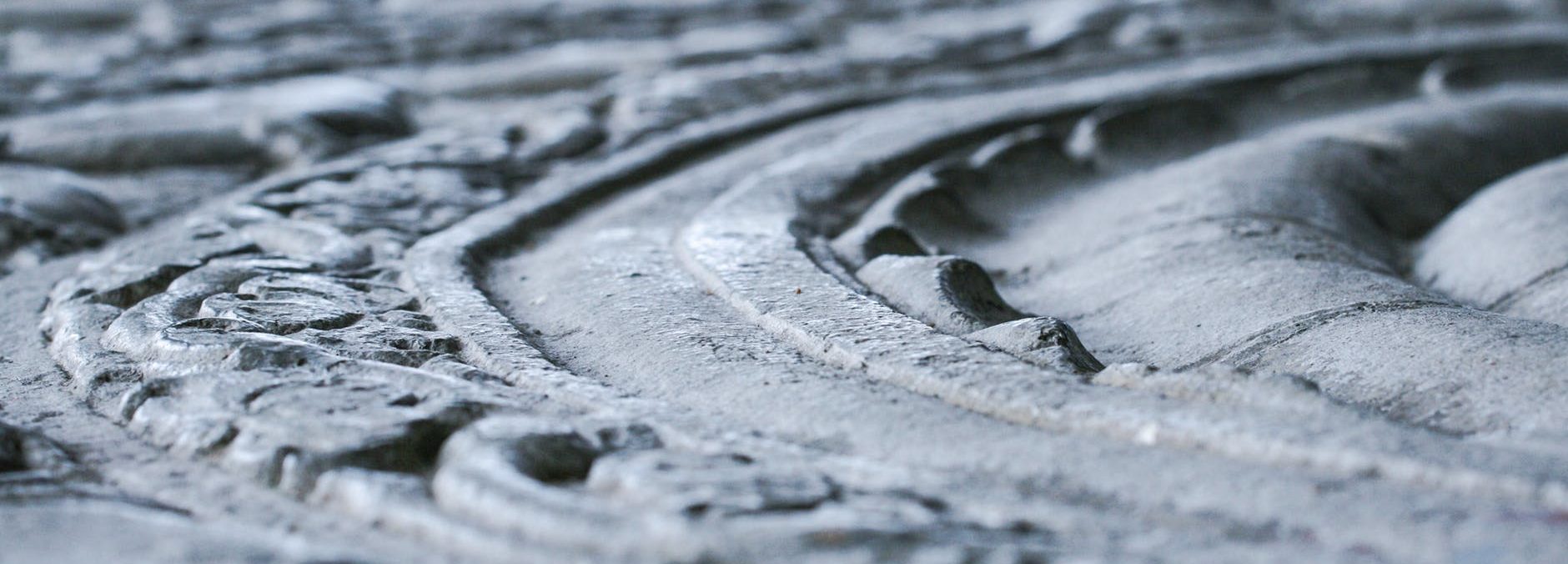Imagine a skillful sculptor carving out the best work of art from stone. He has an image before him of what he wants to achieve. Through great expertise and patience, he plans and produces his masterpiece by removing unwanted material to create the desired form.
The Christian journey of sanctification is similar. The Spirit of God is the skillful Sculptor, while the Christian is the sculpture. Christ is the Image to which the Spirit of God seeks to conform the Christian, through time.
Progressive sanctification is an ongoing process that began with justification and continues until Christ’s return. For this reason, the Bible says that we were sanctified (1 Cor 6:11) and are (continuously) being sanctified (Rom 15:16, 1 Cor 1:2).
In its usage in Romans 15:16 sanctification speaks of eliminating ‘that which is incompatible with holiness’ (BDAG). Paul uses the Greek perfect tense here to indicate both the complete and ongoing work of purification, as he also does in 1 Corinthians 1:2.
Progressive sanctification is the work of the Spirit of God (2 Thess. 2:13, 1 Peter 1:2). It is grounded in the work of Christ (1 Cor. 1:30), according to the will of God the Father (1 Thess. 4:3, 1 Pet 1:2).
Therefore, sanctification is a Trinitarian work.
Sanctification and Sonship
C. S. Lewis rightly remarked that ‘The Son of God became a man to enable men to become sons of God.’
Paul stated that the goal of predestination is that the chosen ones may be ‘conformed to the image of the Son’ (Rom 8:29).
For this reason, the Holy Spirit indwells us both as a guarantee of our future inheritance, and as the Master Sculptor. As the guarantee of our heritage, He assures us not only of the present but also of our final salvation.
Yet as a Sculptor, He chips away unwanted materials from our lives, removing whatever is incompatible with holiness.
The goal of the Holy Spirit in doing this is to conform us to the image of Christ. The Spirit has Christ before His face as He works on us, looking at Him, and at us as He makes us like Christ.
In Election we were united to Christ according to God’s predetermined plan, in the Incarnation Christ is joined to us so that His life became ours, and His death our own. Christ in becoming Man identified with us. Therefore, He died our death, that we may live His life.
This profound reality speaks of our justification, when ‘He made Him who knew no sin to be sin for us, that we might become the righteousness of God in Him’ (2 Cor 5:21).
But Christ’s identification with us is more than imputed righteousness. Our unity with Him works to produce His righteousness in us. This is what the indwelling Spirit creates in us through our active obedience to His will.
But obedience to God does not come naturally to us because we have ‘sinful members’ that must be ‘put to death’ (Col 3:5).
The Sculptor must remove ‘unwanted material’ in a painful process. Painful because our substance does not like being chipped. We sin because we still love sin in some sort. The cross dealt a blow to sin, and the Spirit is dealing with the remnants of it in us. These are the ‘unwanted materials’ that are ‘incompatible with holiness.’
This is sanctification; our being made sons in nature by the Spirit according to the Image of Christ who is naturally the Son of God.
Christ is the image to which we are conformed. It is the Father who in adopting us as Sons makes us ‘fit’ sons, who fully share in the perfection of His Son’s humanity. The Spirit does this work.
Salvation is a Trinitarian work.
Ongoing Sanctification Implies Indwelling Sin
There are those who teach the perfection of the believer’s nature as a past reality. They insist that believers do not sin.
But this is contrary to the whole grain of scripture. The Bible tells us that two things are true of whoever claims to have no sin: 1) he is deceiving himself and the truth is not in him (1 John 1:8) and 2) he accuses God of being a liar (1 John 1:10).
The whole testimony of scripture is of sinning saints, from Adam to Abraham, Jacob to David, Paul to John (both of which write to us about their struggle with sin).
A survey of Paul’s first letter to the believers in Corinth reveals their struggles with sexual immorality (Chapter 5), sectarianism (Chapter 3) and unforgiveness (Chapter 6).
They must deal with their idolatry (Chapter 10) and greed (Chapter 11).
The Church in Philippi struggles with humility and unforgiveness (Chapter 2) while Rome’s superiority, judgmentalism, and sectarianism are manifest for all (Chapters 11-15).
These examples and many more reveal how the believer’s battle with indwelling sin is far from over.
Conclusion
The easiest way to know if you are indeed a believer is if you are daily at war with sin. This war is painful because the Spirit as the Sculptor is chipping away at us. But the end is beautiful, for we will be like Him when we see Him as He is (1 John 3:2).
The journey of sanctification is one of becoming more like Christ, the ‘Firstborn among many brethren’ (Rom 8:29).
We do not lose hope even when we stumble and fall, for He who began a good work in us will complete it (Phil. 1:6). The Master Sculptor is at work, and He will not rest until He has produced His masterpiece, workmanship created in Christ Jesus, adorned as a bride for her husband.
God is the Sculptor, and we are His sculptures, undergoing a transformation to become a marvel that could cause our ears to tingle should we hear the rumour of it. But the tale is true. And this is the Christian story.

